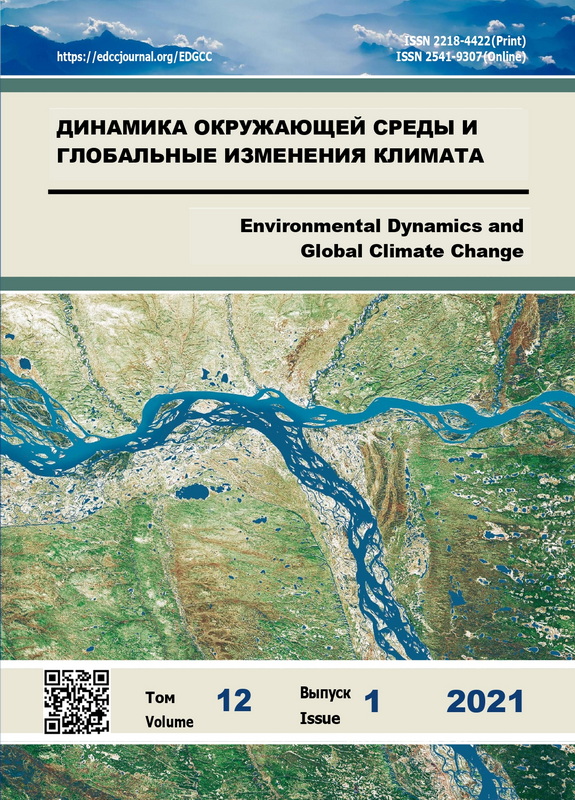Vol 12, No 1 (2021)
- Year: 2021
- Published: 16.07.2021
- Articles: 4
- URL: https://edgccjournal.org/EDGCC/issue/view/4068
Experimental works
 5-14
5-14


Natural features of the orchid refugium on the territory of the natural park “Samarovsky chugas
Abstract
The article discusses the natural conditions and biological resources, landscape features of the key territory of the natural Park "Samarovsky Chugas", located in the city of Khanty-Mansiysk. An overview of geographical studies of this region is given. The main components that influence the formation of natural complexes of a specially protected natural area are characterized. Special attention is paid to the characteristics of vegetation and the processes of anthropogenic changes in the landscapes of this key area. The main ways of vegetation transformation caused by economic activity and changes in the nature of surface runoff are highlighted. The ecological and geographical conditions of the Orchid refugium are characterized. The article substantiates the need to allocate the studied area as a zone with a protected regime within the territory of a natural Park.
 15-26
15-26


Biogeochemical assessment of the main plants at the Nadym district's reindeer pastures (Yamal-Nenets autonomous okrug)
Abstract
The chemical elemental composition of the most widespread species of wood (Betula pubescens, Larix sibirica, Pinus sylvestris, Salix lanata), shrubs (Vaccinium vitis-idaea, Ledum palustust sl), herbs (Eriophorum angustifolium, Equisetum arvense) and lichens (Cladonia stellaris, Cladonia stygia). The concentrations of Cr, Co, Ni, Cu, Zn, Ga, As, Y, V, Na, Mg, Si, P, S, K, Ca, Ti, Mn, Fe, S obtained using the method of retgenofluorescence energy dispersion analysis.
The features of the local biogeochemical background of plants are revealed and their geochemical specialization is studied. The greatest difference in the level of accumulation between different plant species was found for Ni, Zn, Ca, Mn, S, and Si. The analysis of the accumulation coefficients of chemical elements in plants relative to the local background level is carried out. Statistical significant differences in the elements accumulation by plants in different bioclimatic zones were revealed for Cu, Fe, Co, Cr, As, Mg, V, Y.
The studied plants according to environmental safety criteria and the content of normalized micro- and macrocells mainly meet the requirements for fodder plants. The exception is the low content of nutrients Co, Na and K. For the prevention of animal diseases associated with a deficiency of essential elements, it is necessary to optimize the diet of deer by enriching feed with biologically active substances and macro- and microelements.
 27-42
27-42


Discussions
Impact of snow cover and air temperature on ground freezing depth and stability in mountain are
Abstract
During the construction of debris flow and snow avalanche protecting installation in the mountain regions the problem of fixation and stability of these constructions under the conditions of seasonally or permanently frozen ground arise. For this reason ground freezing depth estimation for winter periods 2015/16-2019/20 was performed on the basis of developed calculating scheme for Elbrus region. The calculating scheme for ground freezing is constructed on the basis of three layer media heat conductivity problem (snow cover, frozen and thawed ground) with phase transition on the boundary of frozen and unfrozen ground. Heat balance equation includes phase transition energy, inflow of heat from unfrozen ground and outflow to frozen ground, snow cover and atmosphere. The heat flux is calculated on basis of Fourier law as a product of heat conductivity and temperature gradient. It is supposed, that temperature changes in each media linearly.
 43-46
43-46











